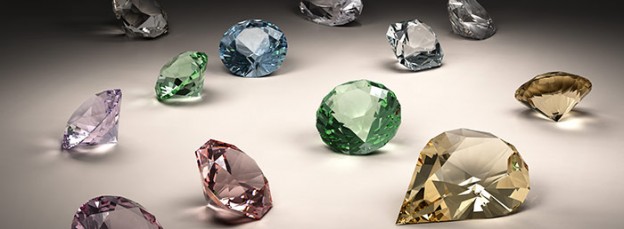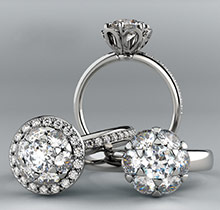When you think of diamonds, most people automatically think of white diamonds. But diamonds actually come in a rainbow of colors. While many people are familiar with yellow and pink diamonds, there are many more colors to be found. Diamond grading laboratories, such as the Gemological Institute of America (GIA), use a list of 27 different colors of diamonds.
The conditions required to color a diamond naturally occur very seldom, making natural color diamonds, sometimes called fancy color diamonds, extremely rare. For every 10,000 colorless diamonds found, there is only one fancy color diamond.
While traditional white diamonds are valued for their lack of color, natural color diamonds are just the opposite. The more intense their color, the more valuable they are. Natural color diamonds are graded by their color hue, tone, and saturation as faint, very light, light, fancy light, fancy, fancy intense, fancy vivid, fancy dark, and fancy deep. Some diamonds will have color variations or secondary colors present as well. The more pure the color, the higher the value. The actual color will also affect the value. Some colors of diamonds are found more frequently than others, making them less valuable. Gray, brown and yellow diamonds are more common and therefore less valuable than colors that appear less frequently, such as pink, blue, and green. Purple, orange and red are among the rarest diamond colors. In fact, natural red diamonds are so rare that most jewelers and diamond dealers have never seen one.
Other factors that affect price are size and shape. Larger stones are scarcer than smaller stones, making them more valuable. Some shapes are also rarer due to weight loss from manufacturing and cutting. Round, princess, and emerald cut natural color diamonds are of the highest value.
Some colored diamonds on the market have been subject to one or more treatments in a lab to enhance the color of the stone. This significantly decreases the value of the stone and it is no longer classified as a “natural color diamond.” While the Federal Trade Commission requires jewelers to disclose any treatments to consumers, some unscrupulous individuals neglect to do so. For this reason, it is highly recommended that you only purchase natural color diamonds that have an independent laboratory report documenting the origin of color of your stone.


